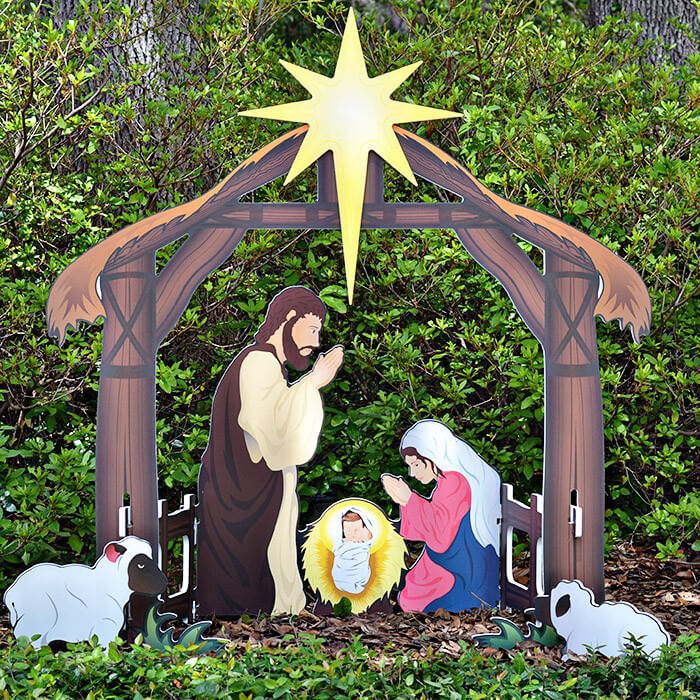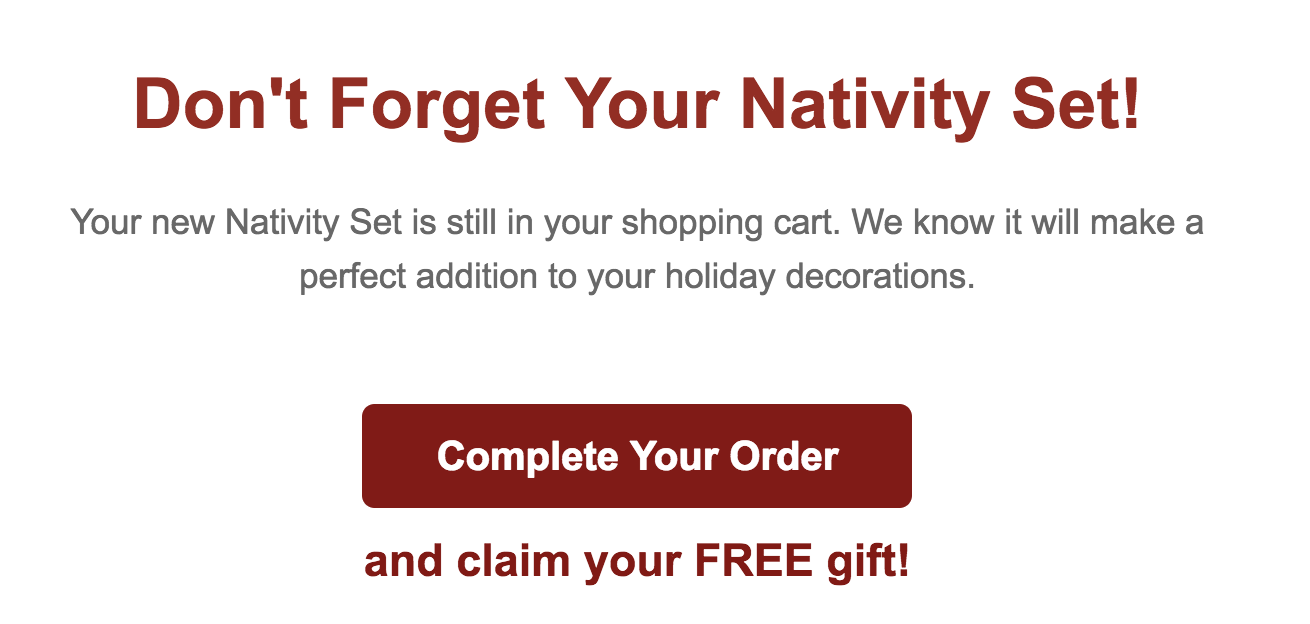Americans are spending billions of dollars on Christmas decorations, according to the National Retail Federation which started tracking the information back in 2005.
During the Christmas period, setting up decorations is top of mind for a lot of people, businesses and churches.
Outdoor Nativity Set: Helping People Decorate for Christmas Since 2010
Since 2010, the Outdoor Nativity Set family have been manufacturing the highest quality nativity sets and yard ornaments that are made with the same marine-grade materials found in production boats (so they’re guaranteed to last for years).

Most people purchase a nativity set directly through their website, OutdoorNativitySets.com, and like most eCommerce companies tracking cart abandonment on their site, they’ve found their cart abandonment rate to be a little over 55%.
Which means more than half of the visitors that are adding products to cart, will abandon and leave the site. This means a good chunk of lost revenue.
Most companies would see this as a huge problem (which it kind of is). But we like to view this as a huge opportunity.
How Did They Recover Sales From Christmas Shoppers?
Outdoor Nativity Sets changed their perspective and saw shopping cart abandonment as a conversion rate optimization and customer service opportunity.
Prospects that began the checkout process were giving them an amazing signal of purchase intent when they abandoned a transaction on their site.
They knew that sending abandoned cart emails would be a second chance to continue the conversation with this incredibly important group of potential customers and also a chance at recovering sales.
Firstly, here are the results of their three email campaign…

Key insights:
- 4,306 abandoned cart emails sent
- 46.3% open rate
- 13.6% click-through rate
- 17.3% conversion rate (348 recovered sales from Christmas decorators)
The Abandoned Cart Christmas Campaign
Outdoor Nativity Sets uses the AmeriCommerce integration with Rejoiner to have their campaigns designed and launched for them - so haven’t had to hire any new staff or learn any new skills/software.
With the first email in the campaign, we recommend sending it within an hour (max) of someone abandoning their cart. In this case, the email is triggered 30 minutes after they abandon their cart.
You want to ensure you’re sending your emails in ‘real-time’ and not batching your sends, as a good portion of the revenue (65%+) is recovered with the first email.
Speaking of, here’s what that first email looked like…

- The subject line: ‘Don’t Miss Out’, uses scarcity to get the prospect to open. With a 46% open rate, we can say it’s doing a pretty good job of that.
-
The opening headline: ‘We’ve Saved Your Nativity Set!’ is a reminder to the prospect of product they added to their cart and at the bottom of the email the exact product they were looking at is dynamically inserted into the abandoned cart email. This gives a clear picture to the user of what they were thinking about ordering, making it more likely they will click through.
-
They also offer an additional free gift with the order to make it more compelling to complete their purchase.
-
And at the bottom of the email there is a ‘Frequently Purchased With’ section designed to recommend / cross-sell other items that go with the product the person abandoned. These are also dynamically inserted into the campaign and will vary depending on what someone has left in their cart.
Now onto email two…

- The second email, which is triggered exactly one day after their cart is abandoned, has a core focus of getting the prospect to click through back to the website.
- There is less copy above the fold and a big bold red call-to-action button in the middle of the email...

Because over 50% of the cart abandonment emails sent by Rejoiner are opened on a device that is different than the one the customer originally abandoned on, it’s important that prospects can easily restore a previous shopping session, regardless of the device they use to return to the site. Session regeneration helps create a friction-less experience for your customers, making it easy for them to complete the checkout process if they happen to return to your site with a different device.
To see session regeneration in action, this campaign from 1-800 Contacts demonstrates how session regeneration works for desktop and mobile.
- Email two also moves the customer service section higher up in the email so people know they can pick up the phone and make a call to have any questions answered if need be.

Email three, is the last email sent in this campaign...

- Email three is triggered at three days after the person abandons their cart.
The main focus of this email is improving the offer for people who are sitting on the edge and undecided if they should buy or not. In this case, the offer has been improved so customers will receive a:
In the last email of the campaign, we usually recommend pulling out your best offer so prospects are more likely to pull out their credit card.
- Below the offer, as in the other emails, there is a clear picture of the item they left in their cart and a big bold call-to-action button so it’s clear what the next step is.
If you’re looking to model a cart abandonment campaign for your own company, then I would suggest starting with a similar strategy as this case study.